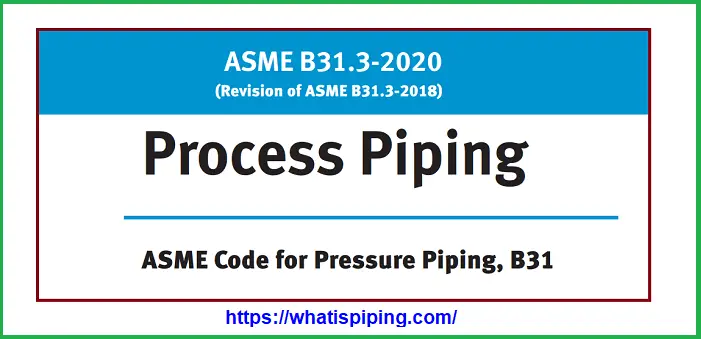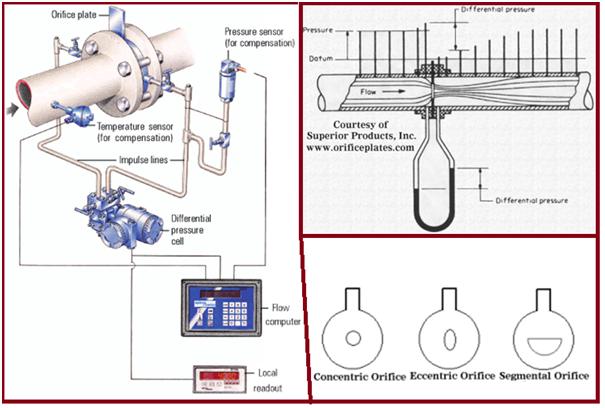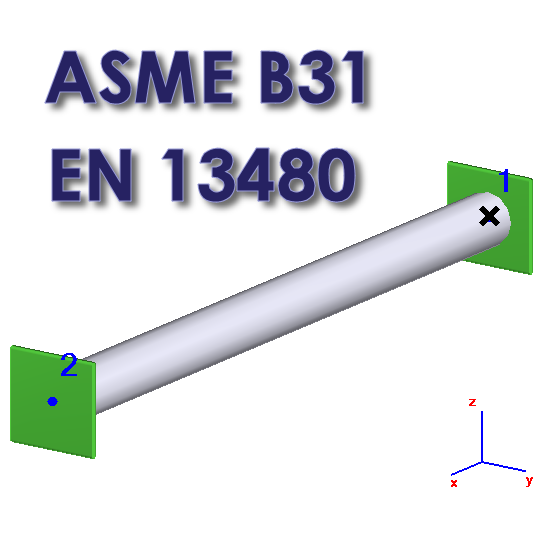Hopefully, all of you are aware that the latest edition of the process piping bible ASME B31.3-2020, which revised the 2018 edition of the same code is issued on the 18th of June, 2021. Similar to earlier editions, this code also will become universally effective 6 months after the date of issuance means from 17th December 2021 onwards. Similar to the earlier new releases, ASME B31.3-2020 also provides many clarifications, updates, and changes. In this article, I will list down 10 such major changes that ASME B31.3-2020 will bring into effect with respect to ASME B31.3-2018.
Changes with respect to Units of Measurement
Additional clause 300.1.4– Units of Measure added stating that either SI or U.S. Customary units should be independently used as the stated values in the ASME B31.3-2020 are not exact equivalents. If It is required to convert from one system of units to another, conversion should be made by rounding the values to the number of significant digits of implied precision in the starting value but not less than four significant digits for use in calculations.
The earlier clause in the 2018 edition “300.1.4- Rounding” has been renumbered as clause 300.1.5 in ASME B31.3-2020.
Changes with respect to the Flexibility Factor and Stress Intensification Factor
Appendix D that was providing the equations for the Flexibility Factor and Stress Intensification Factors of Table 300.4 Status of Appendices in B31.3 has been deleted from ASME B31.3-2020 edition. In the absence of more directly applicable data, the flexibility factor, k, and stress intensification factor, i, shown in ASME B31J shall be used for flexibility calculations described in para. 319.4. Flexibility factors and stress intensification factors for branch connections are defined for in-plane, out-plane, and torsion moments on both the run and branch legs. Branch leg calculations shall use the appropriate branch factor (i.e., kib, kob, ktb, iib, iob, and itb), and run leg calculations shall use the appropriate run factor (i.e., kir, kor, ktr, iir, ior, and itr).
This is the most significant change for piping stress engineers. Now using B31J or FEA will be mandatory. Earlier, the same SIFs were used in the stress analysis programs for headers and branches which in some cases becomes too conservative. Now that problem will be resolved.

Experimental Stress Analysis for Unlisted Components
As per clause 304.7.2 sub-para (b) of the latest edition of ASME B31.3 2020, for experimental stress analysis of unlisted components following the equations from ASME BPVC, Section VIII, Division 2, Annex 5-F, the basic allowable stress from Table A-1 (or A-1M) of B31.3-2020 shall be used as allowable stress, S.
In a similar way, for proof testing of unlisted components following the equations from ASME B16.9, MSS SP-97, or ASME BPVC, Sec VIII, Division 1, UG-101, the basic allowable stress from Table A-1 or Table A-1M shall be used in place of the allowable stresses, S and S2, in Division 1 where applicable.
Bending Stress Calculation for Header and Branch
Equations 19 and 20 for calculating bending stresses in header and branch as was there in clause 319.4.4 sub-paragraph (c) have been deleted in ASME B31.3 2020 contrary to the ASME B31.3-2018. Similarly, equation 23-b2 has also been deleted.
Impact test requirement for Weld Metals
The impact test requirement criteria for Weld Metal of the welding procedure qualification test coupon has been changed in table 323.2.2 of ASME B31.3-2020. In code B31.3-2018, the impact test was required for design minimum temperature<-29 Deg C. However, the latest edition of B31.3 requires an impact test for design minimum temperature below -18 Deg C.
Additional Standards
The following additional standards are added in Table 326.1 of ASME B31.3-2020 with respect to the earlier revision B31.3-2018.
- ASTM F1476
- ASTM F1548.
Also, AWWA C504 has been removed from that table.
Standards ASTM D3309, D2310, D2447, and ASTM F1974 have been deleted from Table A326.1 Component standards for non-metallic piping systems.
Use of ASME B31P
Clause 330.1 in ASME B31.3-2020 provides permission to use preheating rules from ASME B31P as an alternative to general preheat requirements. Additionally, the process and temperature control methods specified in ASME B31P are recommended for heat treatment purposes.
Consideration of Frictional Clamping Force for Supporting Non-Metallic Piping
For supporting non-metallic piping systems, ASME B31.3-2020 prohibits to use of frictional forces from clamping pressure as an anchor mechanism unless the support/anchor is specifically recommended for this purpose by the manufacturer. Positive stops like shear collars can be used as axial restraints. There was no such prohibition in ASME B31.3-2018.
Shear and Bearing Allowable for High-Pressure Piping System
The allowable stress definition for shear and bearing in the case of high-pressure piping has been revised in ASME B31.3-2020. Now the allowable stress in shear should be 0.57 times Syt (in place of 0.8 times as provided in B31.3-2018). The allowable stress in bearing shall be 1.0 times Syt (in place of 1.6 times as provided in B31.3-2018).
Also, the basis for allowable stresses for other materials (other than bolting materials) for the high-pressure piping system has been modified with respect to the earlier edition. Refer to clause K302.3.2 sub-paragraph (b), (c), and (d) for details.
The majority of the changes or revisions in ASME B31.3-2020 have been made for High-Pressure and High-purity piping systems.
Few more related articles for you.
Changes in the 2018 Edition of ASME B 31.3 2018 with respect to 2016 edition
Stress Intensity Factor (SIF), Flexibility Factor: ASME B31.3 vs ASME B31J
How to use ASME B31J-2017 and FEM for SIF and k-factors for Stress Analysis
ASME B31J & B31J Essentials: Why these are useful in Piping Stress Analysis?
An Issue about USER DEFINED SIFs









Hi,
you could do the same article but for the B 31.1.?
Thank you
Congratulations to Tony Paulin and Paulin Research Group on the acceptance of ASME B31J for SIFs and flexibility factors. I know the effort involved in re-defining the standard and the work is commendable.
Thanks to PRG for the great work that they have done about B31J .
It is very strange that a small group of genius mechanical engineers changed the whole appendix altogether after so many years of undisrrupted arguement about validity of the previous data
Merci pour les info concernant les modifications des normes .C’est très intéressant .